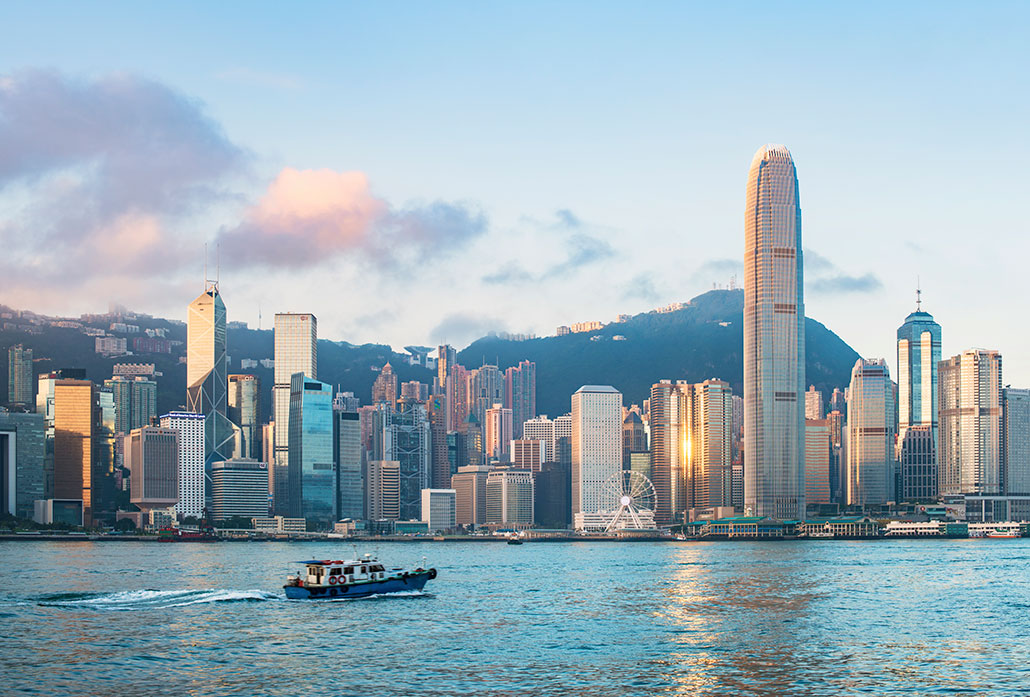For greener toilets and air conditioning, consider saltwater
Coastal cities could save freshwater for drinking and reduce their carbon footprints

Fresh water is used to flush most toilets and to cool many cities. Switching to salty seawater, though, could provide many benefits.
Javier Zayas Photography/Moment/Getty Images
Share this:
- Share via email (Opens in new window) Email
- Click to share on Facebook (Opens in new window) Facebook
- Click to share on X (Opens in new window) X
- Click to share on Pinterest (Opens in new window) Pinterest
- Click to share on Reddit (Opens in new window) Reddit
- Share to Google Classroom (Opens in new window) Google Classroom
- Click to print (Opens in new window) Print
By Laura Allen
This is another in our series of stories identifying new technologies and actions that can slow climate change, reduce its impacts or help communities cope with a rapidly changing world.
Flush a toilet with water that could be used for drinking? With water shortages on the rise, coastal cities may have a better option: seawater. Ocean water also can be used to cool buildings. This second idea could help cities reduce their carbon footprint and slow climate change.
So conclude the authors of a March 9 study in Environmental Science and Technology.
Oceans cover most of the planet. Although plentiful, their water is too salty to drink. But it could serve as an important and still largely untapped resource for many coastal cities. The idea came to Zi Zhang shortly after she moved from Michigan to Hong Kong a few years ago to get a PhD in engineering.
Hong Kong sits on the coast of China. For more than 50 years, seawater has flowed through the city’s toilets. And in 2013, Hong Kong built a system that used seawater to cool part of the city. The system pumps cold seawater into a plant with heat exchangers. The seawater absorbs heat to chill pipes full of circulating water. That chilled water then flows into buildings to cool their rooms. The slightly warmed seawater is pumped back into the ocean. Known as district cooling, this type of system tends to use far less energy than typical air conditioners.
Zhang wondered: How much water and energy had this tactic saved Hong Kong? And why weren’t other coastal cities doing this? Zhang and her team at the Hong Kong University of Science and Technology set out for answers.

Water, power and carbon savings
The group focused on Hong Kong and two other big coastal cities: Jeddah, Saudi Arabia, and Miami, Fla. The idea was to see what it might look like if all three adopted city-wide saltwater systems. The cities’ climates were quite different. But all three were densely populated, which should minimize some costs.
All three places would save lots of freshwater, the researchers found. Miami could save 16 percent of the freshwater it uses each year. Hong Kong, with more non-drinking-water needs, was saving up to 28 percent. Estimated energy savings ranged from just 3 percent in Jeddah to 11 percent in Miami. These savings came from the more efficient saltwater air conditioning. Also, the cities would need less energy to treat salty wastewater than they have been using to treat sewage now.
Though costly to build, saltwater-cooling systems could pay off in the long run for many cities, the researchers say. And because these systems use so much less electricity, they’re greener and emit less carbon-rich greenhouse gases. Scientists refer to this as a type of decarbonization.
Hong Kong, Jeddah and Miami now burn fossil fuels to produce much of their energy. The researchers calculated how emissions of greenhouse gases would drop if each city instead used seawater for cooling and flushing. Next, they calculated how much pollution would be created to build the new system. They compared these results to see how emissions of climate-warming gases would change for each city.
Hong Kong would see the biggest cut in greenhouse gases if the system were expanded to the whole city. It could drop by some 250,000 tons each year. For perspective, each 1,000 tons of carbon dioxide (or equivalent greenhouse gases) eliminated would be equal to taking 223 gasoline-powered cars off the road.
Miami could see a drop of around 7,700 tons of carbon pollution per year, the study found.
Saltwater cooling would cause more planet-warming gases in Jeddah than it would save. The reason: Jeddah’s urban sprawl — and all the pipes that would be needed to service it. The pollution generated from building such a large system would be higher than what the system would save.
Clearly, Zhang now concludes, there is “no one-size-fits-all solution.”
Challenges in using seawater
“All options should be explored when it comes to conserving freshwater,” says Kristen Conroy. She’s a biological engineer at Ohio State University in Columbus. She sees many benefits to using seawater for city services.
But she sees challenges, too. Existing cities would need to add a whole new set of pipes to move seawater to buildings. And that would be costly.
Seawater air conditioning is not common in the United States, but it has been tried in a few places. The island of Hawaii installed a small test system at Keahole Point back in 1983. More recently, Honolulu planned to build a large system to cool many buildings there. But the city scrapped those plans in 2020 due to rising construction costs.
Sweden is home to a giant seawater cooling system. Its capital, Stockholm, cools most of its buildings this way.
Inland cities can tap lake water to do the same thing. Cornell University and nearby Ithaca High School in central New York take cold water from Cayuga Lake to cool their campuses. And in San Francisco, Calif., a science museum called the Exploratorium circulates salty bay water through a heat exchanger. This helps keep an even temperature in its building.
It’s urgent that cities both reduce carbon emissions and adapt to the impacts of climate change, Zhang says. Flushing with seawater and using lakes or seas to cool our buildings, she finds, can be smart options.






